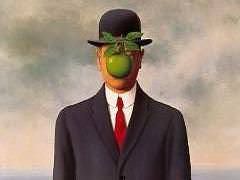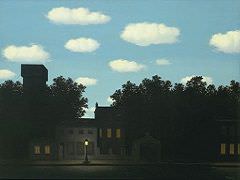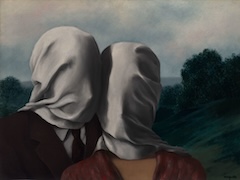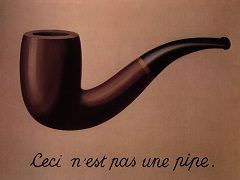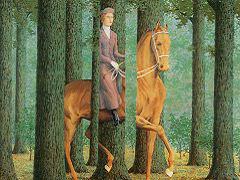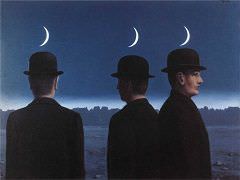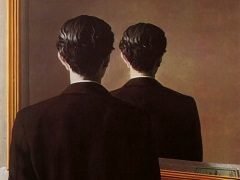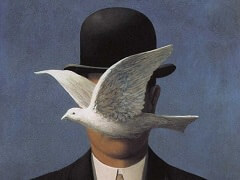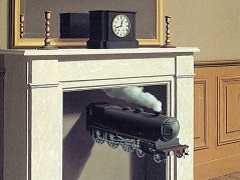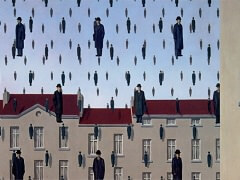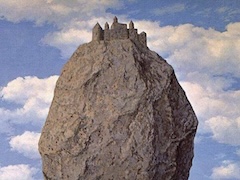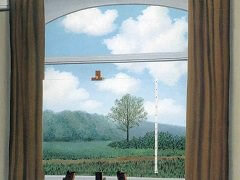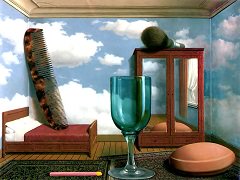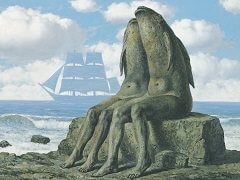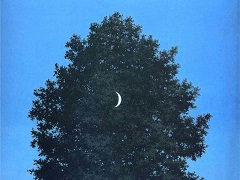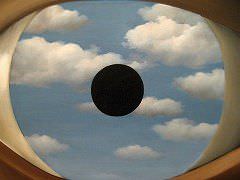The Glass House, 1939 by Rene Magritte
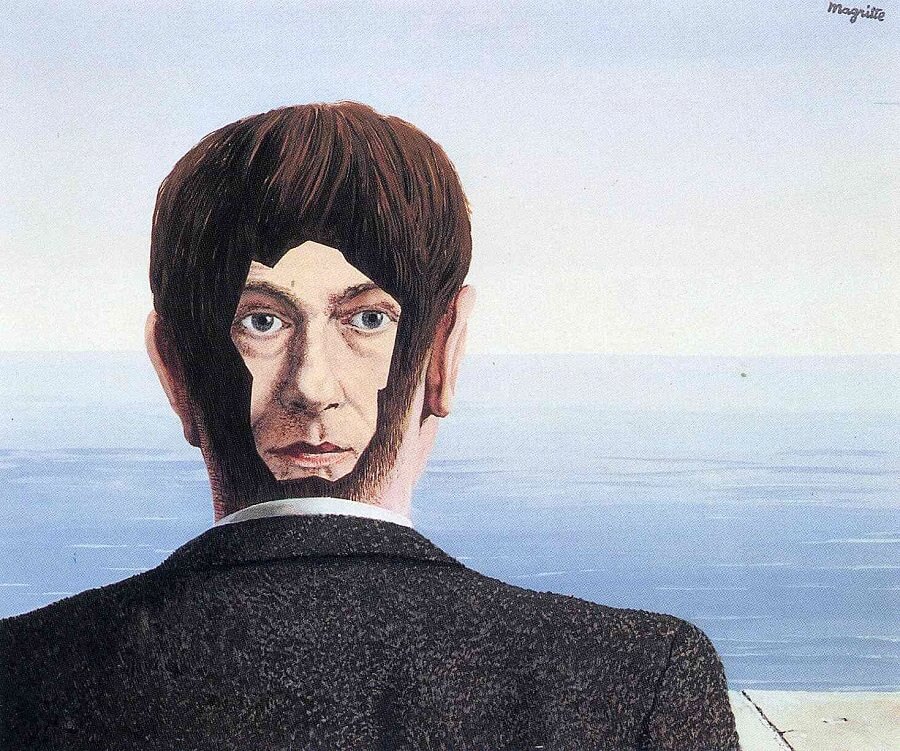
According to those who know Edward James, this work bears a resemblance to him. According to others, it is rather like Magritte himself. Whoever may be represented, there is more than a portrait here. Psychologically The House of Glass marks a brusque victory over the artist's innate, almost superstitious fear of the portrait.
The point of departure was the figure seen from the rear. When Magritte painted Edward James's portrait, he chose to paint his back, placing him before a mirror in which it was again his back that appeared. The title became Not to Be Reproduced.
The unexpected feature in The House of Glass is the sharp reversal of the face, which is looking at no one at all and which is of an embarrassing reality - penetrating through an opening in the skull and hair, it is not merely visible, but aggressive (as suggested by the opened skull, the image comparable to a person breaking into his own house). Yet everything is painted with an absurd, meticulous mock realism - making visible simultaneously a front and a rear view, whereas in the real world the two views exist only as visible and invisible. In other words, the conjuring up of simultaneity evades the rules of three-dimensional representation, but at the same time Magritte has preserved the method of painting expected for that kind of representation, which creates ambiguity.

